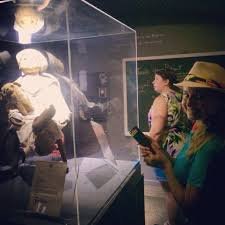Horror movies often draw inspiration from real-life events and legends, adding a terrifying edge to their fictional narratives. Among these, Robert the Doll stands out as a spine-chilling film that delves into one of America’s most infamous paranormal legends. Released in 2015 and directed by Andrew Jones, the movie brings to life the eerie story of a haunted doll that has captivated believers and skeptics alike for decades.
The Legend Behind the Movie
The film Robert the Doll is inspired by the real-life legend of a cursed doll named Robert, which currently resides in the East Martello Museum in Key West, Florida. The doll was gifted to a young boy named Robert Eugene Otto in the early 1900s by a servant practicing voodoo. Shortly after, strange occurrences began to unfold in the Otto household—objects moved on their own, unexplained giggles echoed through the halls, and the doll seemed to shift its gaze ominously.
Robert Eugene, nicknamed Gene, insisted the doll was responsible for the disturbances, claiming it was alive. While dismissed as a child’s imagination by some, the legend gained traction over the years as visitors and museum staff reported paranormal activity linked to the doll.
The Movie’s Plot
Robert the Doll focuses on a young family that hires a new nanny, Agatha, who gifts the eerie doll to their son, Gene. What begins as a seemingly innocent gesture quickly turns sinister. The doll appears to take on a life of its own, causing a series of horrifying events that leave the family questioning their sanity. As they delve deeper, they discover the dark secrets surrounding the doll and its origins.
The film cleverly blends psychological suspense with supernatural horror, leaving viewers questioning whether the events are due to the doll’s influence or the family’s unraveling mental state. The movie’s eerie atmosphere and unnerving cinematography make it a standout in the haunted doll genre.
Why Robert the Doll Resonates with Horror Fans
- Based on a True Story: The chilling authenticity of the legend behind Robert adds a layer of realism that heightens the terror.
- Atmospheric Horror: The movie’s subtle approach to scares—shadows moving in the background, objects mysteriously falling, and the doll’s unsettling presence—creates a tension-filled experience.
- Psychological Depth: The story explores themes of paranoia, belief, and family dynamics, making it more than just a simple horror tale.
- Cultural Fascination with Haunted Objects: From Annabelle to Chucky, haunted dolls have long fascinated audiences. Robert the Doll builds on this fascination with its ties to real-world lore.
Sequels and Legacy
The success of the original movie led to a series of sequels, including The Curse of Robert the Doll (2016) and Robert Reborn (2019), expanding the doll’s terrifying mythology. Each film delves deeper into the cursed object’s origins, intertwining historical elements with supernatural horror.
The Real Robert: A Must-See for Fans
For those intrigued by the legend, visiting the real Robert the Doll in Key West is a chilling experience. The doll, encased in glass, is said to curse anyone who disrespects or photographs it without asking permission. Letters from previous visitors, apologizing for their rudeness and begging for forgiveness, surround the display.
Final Thoughts
Robert the Doll is a masterful horror film that captures the essence of a timeless urban legend. Its blend of psychological tension and supernatural terror makes it a must-watch for fans of the genre. Whether you’re a believer in the paranormal or a skeptic seeking a good scare, this movie offers a haunting experience you won’t soon forget.
As the credits roll, one question lingers in the mind of every viewer: What if Robert really is alive?



